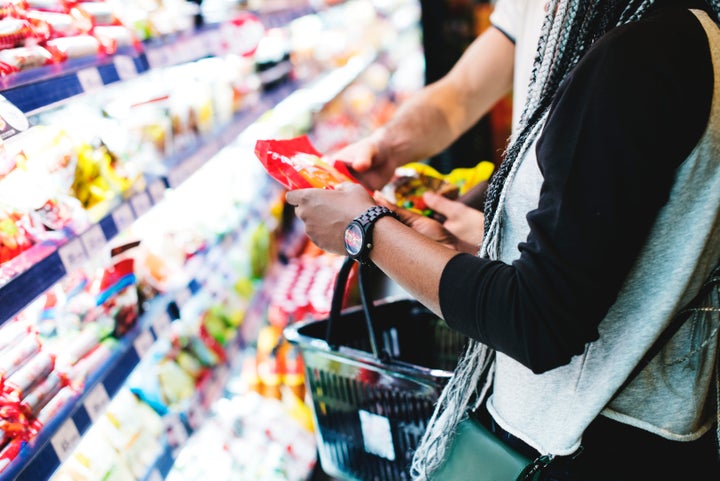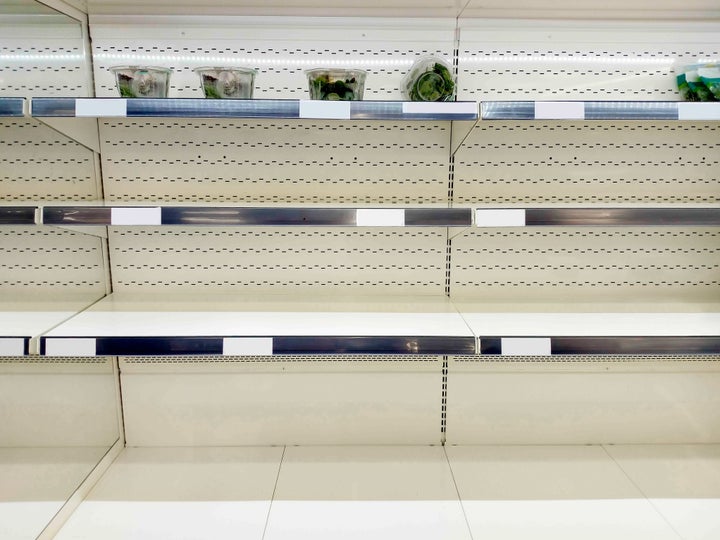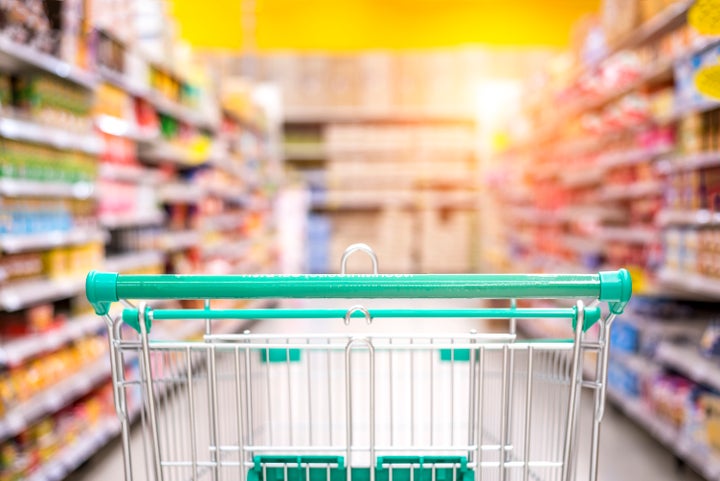Access to fresh food isn’t a guarantee for everyone. Despite growing numbers of grocery stores in the U.S., 6% of the population lives in what the U.S. Department of Agriculture considers to be “food deserts,” or low-income areas where a third of residents don’t have access to fresh, healthy food. These communities rely primarily on packaged or fast food, which just isn’t as nutritious.
The term “food desert” was reportedly coined in Scotland in the early 1990s and popularized in the U.S. in 2010, when the USDA quantified and mapped food deserts as part of Michelle Obama’s “Let’s Move!” campaign. It’s become a buzzword for talking about food poverty, but the value of the term is facing increased criticism.
The common belief is that providing low-income neighborhoods with supermarkets will solve food deserts, but studies show this can have little effect — and for good reason. What actually causes food inequality goes beyond location, according to experts, and extends to bigger structural inequalities around income, education, nutritional knowledge and, importantly, race.
“The fact that predominantly black neighborhoods, on average, have fewer stores and poorer quality [food] compared to their white counterparts means something,” said Ashanté M. Reese, a professor of sociology and anthropology at Spelman College who studies race and food inequity.
Reese and other specialists agree that the “food desert” label oversimplifies a complicated web of systemic issues and suggests either that an area can’t be a source of healthy food or that plonking down a supermarket will fix the problem. Eliminating food inequality requires not just opening new stores, but making sure people have accessible means of transportation to actually get to them. It means culturally sensitive business development and prices people can afford. It might even mean eliminating the term “food deserts” altogether.

Because food access is deeply connected to race, Reese believes “food apartheid” is a more appropriate term for low-access areas. “For me, it calls attention to the reality that food access is intimately tied to policies and practices, current and historical, that come from a place of anti-blackness,” she said.
That’s not to say that “food apartheid” is a perfect term, as it can invoke a visceral reaction in some people who are reminded of the atrocities of South African apartheid, Reese said. Others have suggested more literal terms. In a 2018 report, researchers at Johns Hopkins University asked for community feedback in the Baltimore area and came up with the term “healthy food priority areas.” Others use the term “low-access communities” when talking about food equity.
“In general, you want to avoid terminology that is disparaging to the community,” said Alice Ammerman, a professor at the University of North Carolina at Chapel Hill who focuses on community-based nutrition intervention in primarily low-income and minority populations.
Whatever terms they use, nutrition experts said what’s most important is acknowledging all of the reasons why food deserts — defined by the USDA as low-income communities where a third of the population live more than a mile (for urban areas) or 10 miles (for rural areas) from a supermarket — exist in the first place — and putting pressure on policymakers to address the root causes.
“The fact that predominantly black neighborhoods, on average, have fewer stores and poorer quality [food] compared to their white counterparts, means something”
- Ashanté M. Reese, professor of sociology and anthropology at Spelman College
Kristen Gradney, a registered dietitian in Baton Rouge, Louisiana, said she’s never thought of the term “food desert” as an inherent problem. “I assume people understand there are reasons why the stores aren’t there,” said Gradney, a black woman who primarily works with people living in low-access areas and also serves as the state policy representative for the Louisiana Academy of Nutrition and Dietetics.
“These communities are ‘everything deserts,’” she said. “They really don’t have health care. They don’t have transportation and infrastructure. They don’t have basic things that every other community typically has.”
A dearth of resources feeds into a negative capitalist feedback loop. “Retailers have a location intelligence that they use,” Gradney said. “They look at demographic, income and infrastructure, then choose areas where people already have all the resources that they need to come into the store and purchase goods.” In low-income communities where all of this isn’t already in place, there’s much less incentive to open.
Even if a grocery store were to open, it may technically eradicate a food desert, but it doesn’t solve the problem of food access. “It’s not just about the fact that there’s not a physical store there,” Gradney said. “Even the word ‘access’ is a conundrum here.” Most people living in these communities don’t have cars or access to public transportation, and lugging groceries even half a mile on foot can be a challenge. Beyond that, “people may not feel safe walking to the grocery store, so they won’t go,” she said.
Then there’s the question of affordability. “Stores located in low-income communities may charge higher prices because of security costs or because their sales volume is lower,” Ammerman said. “This creates more food access problems.”

And neither proximity nor price guarantees that the food will be high-quality or meet the needs and desires of people in the community.
“I’ve lived in places where my local grocery store was there, accessible, but the produce was always wilted and the meat didn’t look appealing,” said Psyche Williams-Forson, a professor at the University of Maryland College Park who does research on food and culture, specifically food shaming and policing in communities of color. If fresh food doesn’t look good, nobody will buy it.
People also don’t want to buy food that’s unfamiliar or doesn’t fit into their way of eating. “Whatever grocery store is going to be within access needs to take into consideration the dynamic and culture of the given community,” Williams-Forson said. “Just because you have a grocery store and a farmer’s market in your neighborhood doesn’t mean they provide fresh foods that are culturally relevant to you.” If a store in a black neighborhood only sells “white people food” and doesn’t offer the produce and other staples that are central to a community’s primary cuisine, that’s another barrier to access.
Additionally, “if a community has not historically had access to fresh fresh produce and meats, they likely don’t have the skills to cook them into a meal that their family is going to actually like,” said Gradney, who hosts cooking classes that teach culturally relevant ways to prepare common fresh ingredients. She incorporates basic nutrition education that teaches students how food plays a role in chronic disease and general well-being. It’s one of the ways she and other nutrition experts are trying to find local solutions amid a national food access crisis.

Gradney works closely with the Mayor’s Healthy City Initiative in Baton Rouge to improve food access and health outcomes in novel, community-focused ways. “We really brainstorm ways to go around the retailer, to not rely on them,” she said. As a way to deliver fresh foods, they work with Top Box Foods, a nonprofit that gets fresh produce (and, as of recently, meat and prepared meals) directly from wholesalers and assembles boxes that are delivered to a central location in a community and priced affordably.
In June 2018, Ammerman launched Good Bowls in Chapel Hill and surrounding areas with the mission to produce, distribute and sell healthy frozen meals on a kind of sliding scale — they are more expensive in affluent neighborhoods, which subsidizes lower prices in low-income neighborhoods. In developing the recipes, Ammerman works with various communities to make sure the meals fit their tastes and cultural preferences. These frozen meals have a much longer shelf life than fresh ingredients — although they’re equally nutritious — and can be stocked at convenience stores in areas where a grocery store might not be accessible. The frozen meal approach also lowers barriers to access for the many people in low-income communities who don’t have time to cook.
Williams-Forson stressed the importance of tailoring solutions to each community. “The bottom line is, access to a grocery store doesn’t guarantee anything,” she said. A lack of food access, by any name, results from larger systemic issues that a shiny new grocery store just can’t fix.
For more content and to be part of the “This New World” community, follow our Facebook page.
HuffPost’s “This New World” series is funded by Partners for a New Economy and the Kendeda Fund. All content is editorially independent, with no influence or input from the foundations. If you have an idea or tip for the editorial series, send an email to thisnewworld@huffpost.com.